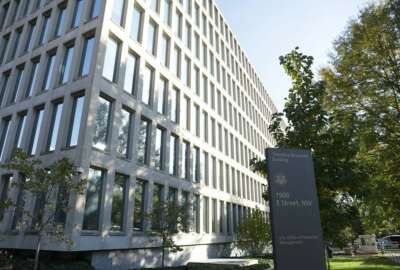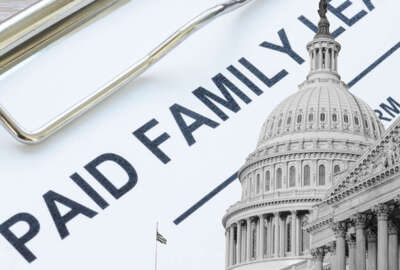
OPM faces tight timeline to create new USPS health insurance marketplace
A major Postal Service reform bill signed into law last year is moving postal employees and retirees into a different health insurance marketplace from the rest of...
A major Postal Service reform bill signed into law last year is moving postal employees and retirees into a different health insurance marketplace from the rest of the federal workforce.
The Postal Service Reform Act requires the Office of Personnel Management to create a separate Postal Service Health Benefits program (PSHB) within the Federal Employee Health Benefits (FEHB) program, starting in January 2025.
The Postal Service Health Benefits program will provide health insurance plans to eligible USPS employees, annuitants and their eligible family members. But the legislation specifies requirements for postal-only health plans that don’t apply to plans offered under FEHB.
OPM, meanwhile, faces a tight timeline to create a parallel health benefits marketplace and online infrastructure for postal employees and retirees ahead of an open enrollment period in late 2024.
OPM Chief Information Officer Guy Cavallo said creating the PSHB is a “major initiative for us at OPM,” but added that the agency is also managing several other major IT modernization projects this year.
Cavallo, speaking on Feb. 8 at ATARC’s IT modernization summit, said Congress gave OPM a “very short timeline” to create the new PSHB system, given the specifications in the postal reform legislation.
“They did not ask us for our opinion on how long would it take to do this, but I have that deadline,” Cavallo said.
The postal-only health insurance marketplace comes with its own unique specifications that don’t apply to federal employees under FEHB. The legislation requires all future postal retirees to enroll in Medicare Part B, in an effort to save USPS tens of billions of dollars over the coming years.
“So [they’re] totally different requirements than the current Federal Employee Health Benefits system. That means our system is going to have to double-check and make sure that they enrolled in Medicare and that they’re eligible,” Cavallo said.
The legislation directs OPM to run the PSHB in a similar fashion to the FEHB. But the requirement for nearly all future postal retirees to enroll in Medicare necessitates that OPM builds certain unique features into the PSHB system that aren’t built into the infrastructure for FEHB.
“We definitely have to have enrollment available, we have to have an eligibility check available. We have to be able to collect money from the Postal Service to pay for the plans that the employees have selected [and] we have to distribute that money to each respective provider,” Cavallo said.
Because future postal retirees must enroll in Medicare Part B, Cavallo said health plan carriers have to provide different plans than what they currently offer under the FEHB.
The postal reform legislation requires OPM, to the greatest extent possible, to ensure the PSHB includes each FEHB plan that had at least 1,500 USPS employees or retirees enrolled, as of January 2023.
“Because it’s a smaller market segment, it’ll be smaller plans than the current 160-170 plans that are available in FEHB,” Cavallo said about the PSHB.
The PSHB, according to a February 2022 Congressional Research Report, would also include plans offered by other non-FEHB insurers, as deemed appropriate by OPM.
John Hatton, staff vice president for policy and programs at the National Active and Retired Federal Employees Association (NARFE), said OPM should be able to launch the PSHB “without major changes in coverage.”
“Some of those smaller plans, they could still be eligible to provide plan options in the postal program, but it’s possible they may not,” Hatton said. “We certainly want OPM to make all efforts to not just [get] those plans at that 1,500 threshold, but to include as many plan options that are currently in FEHB, in the postal program, to prevent loss of current insurance coverage for enrollees. That doesn’t mean people are going to lose insurance, they just have to choose a different plan.”
The Postal Service Reform Act is expected to save USPS about $22.6 billion over the next decade through an increased enrollment of USPS employees and retirees in Medicare. Next to the rest of the federal government, USPS is the largest contributor to the Medicare trust fund in the country.
OPM last year issued some guidance to postal employees and retirees about the PSHB answering frequently asked questions about the new health care system.
Current USPS employees and retirees will remain in the FEHB for the rest of 2023 and 2024, but will no longer be able to remain in an FEHB plan, effective Jan. 1, 2025. Their current FEHB enrollment will continue unless they make any changes prior to January 2025.
During Open Season in 2024, eligible individuals must enroll in a PSHB plan, in order to receive health insurance based on their active employment with or retirement from USPS.
Under the PSHB, USPS employees and retirees will be able to enroll in self-only, self-plus-one, or family coverage.
If a USPS employee or retiree was enrolled in an FEHB plan in 2024 and did not select a PSHB plan in 2025, OPM will automatically enroll them in a plan offered by the individual’s FEHB insurer. If such a plan is not available, OPM will enroll them in the lowest-cost, non-high deductible, nationwide PSHB plan that does not charge a membership fee.
Enrollment in a PSHB plan will not disrupt enrollment in other insurance and benefits programs, including the Federal Employees Dental and Vision Insurance Program (FEDVIP), the Federal Flexible Spending Account Program (FSAFEDS), the Federal Employees’ Group Life Insurance (FEGLI), or the Federal Long Term Care Insurance Program (FLTCIP).
USPS spokeswoman Darlene Casey told Federal News Network that “OPM and the Postal Service will provide updates leading up to the 2024 PSHB open season to help ensure a smooth transition for all eligible employees and annuitants.”
Insurers with plans in PSHB and FEHB will be required in 2025 to ensure that their PSHB and FEHB plans have equivalent benefits and cost-sharing requirements, with certain exceptions.
PSHB premiums will be determined separately from FEHB premiums. That means PSHB insurers will determine premiums based on the amount of health care expected to be used by USPS employees, retirees and their dependents.
The USPS contribution toward annuitant premiums would be calculated using the same statutory formula currently used under FEHB, but would be based only on PSHB plan premiums.
Current postal retirees, or USPS employees 64 or older at the start of the PSHB program, will not need to enroll in Part B as part of the switchover to the PSHB.
These USPS employees and retirees, however, will be eligible to voluntarily enroll in Medicare Part B as part of a special enrollment period, without being subject to late enrollment fees. That special enrollment would start in April 2024 and last for six months.
Hatton said NARFE encourages OPM to create the PSHB with “as little disruption as possible,” both in terms of loss of plans for postal employees and retirees, as well as in terms of significant changes to coverage for them.
“The lack of disruption and having clarity, I think, are kind of the biggest challenges OPM faces in implementation of this,” Hatton said. “FEHB provides really quality health insurance coverage for federal employees and retirees, including postal employees and retirees, and making sure they maintain that through this transition to this new program really should be their top priority.”
OPM is building the PSHB program on a cloud-based platform, and plans to use the project as a template for eventually bringing the FEHB onto the cloud as well.
“My mandate was, ‘This system is not going to be on-premise, it’s going to be a cloud solution.’ The current FEHB system is on-premise,” Cavallo said. “Once we’re done with this, then we’ll redo the Federal Health and Benefits program, leveraging probably the same platform — maybe not the same vendor, but at least a cloud-based platform,” Cavallo said.
OPM, however, is juggling the creation of the PSHB marketplace as one of several major IT modernization projects this year.
The agency also received funding from the Technology Modernization Fund to modernize its public-facing website and accelerate its adoption of a zero-trust cybersecurity architecture.
Meanwhile, Cavallo said OPM must also come up with workarounds for a mainframe that is “getting near its end of life.”
“With the thousand programs on it, my desire would be to rewrite all of those, make them user-centric and cloud-based. I don’t have enough time,” Cavallo said.
As a stopgap solution, Cavallo said OPM is running a study on moving the mainframe to the cloud in an “emulation mode, so that we don’t have to spend $14, $15, $16 million on hardware that, as soon as I can get out of that, I’m going to be turning that hardware off.”
Cavallo said his team holds monthly project reviews that usually last about six hours, because OPM averages around ongoing 100 projects a month.
“Obviously, out of those projects are some that are more important than the others. But it also doesn’t mean that we can’t be doing things in parallel,” Cavallo said. “The federal government needs to continually modernize, even if I got all that done, my work is not done. Because tomorrow, I need to modernize what we just implemented and keep going.”
Copyright © 2025 Federal News Network. All rights reserved. This website is not intended for users located within the European Economic Area.
Jory Heckman is a reporter at Federal News Network covering U.S. Postal Service, IRS, big data and technology issues.
Follow @jheckmanWFED
Related Stories





